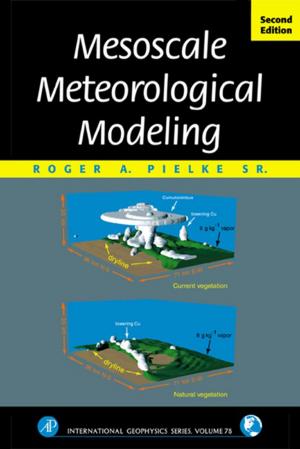Differential Quadrature and Differential Quadrature Based Element Methods
Theory and Applications
Nonfiction, Computers, Advanced Computing, Engineering, Computer Engineering, Science & Nature, Technology, Mechanical, General Computing| Author: | Xinwei Wang | ISBN: | 9780128031070 |
| Publisher: | Elsevier Science | Publication: | March 24, 2015 |
| Imprint: | Butterworth-Heinemann | Language: | English |
| Author: | Xinwei Wang |
| ISBN: | 9780128031070 |
| Publisher: | Elsevier Science |
| Publication: | March 24, 2015 |
| Imprint: | Butterworth-Heinemann |
| Language: | English |
Differential Quadrature and Differential Quadrature Based Element Methods: Theory and Applications is a comprehensive guide to these methods and their various applications in recent years. Due to the attractive features of rapid convergence, high accuracy, and computational efficiency, the differential quadrature method and its based element methods are increasingly being used to study problems in the area of structural mechanics, such as static, buckling and vibration problems of composite structures and functional material structures.
This book covers new developments and their applications in detail, with accompanying FORTRAN and MATLAB programs to help you overcome difficult programming challenges. It summarises the variety of different quadrature formulations that can be found by varying the degree of polynomials, the treatment of boundary conditions and employing regular or irregular grid points, to help you choose the correct method for solving practical problems.
- Offers a clear explanation of both the theory and many applications of DQM to structural analyses
- Discusses and illustrates reliable ways to apply multiple boundary conditions and develop reliable grid distributions
- Supported by FORTRAN and MATLAB programs, including subroutines to compute grid distributions and weighting coefficients
Differential Quadrature and Differential Quadrature Based Element Methods: Theory and Applications is a comprehensive guide to these methods and their various applications in recent years. Due to the attractive features of rapid convergence, high accuracy, and computational efficiency, the differential quadrature method and its based element methods are increasingly being used to study problems in the area of structural mechanics, such as static, buckling and vibration problems of composite structures and functional material structures.
This book covers new developments and their applications in detail, with accompanying FORTRAN and MATLAB programs to help you overcome difficult programming challenges. It summarises the variety of different quadrature formulations that can be found by varying the degree of polynomials, the treatment of boundary conditions and employing regular or irregular grid points, to help you choose the correct method for solving practical problems.
- Offers a clear explanation of both the theory and many applications of DQM to structural analyses
- Discusses and illustrates reliable ways to apply multiple boundary conditions and develop reliable grid distributions
- Supported by FORTRAN and MATLAB programs, including subroutines to compute grid distributions and weighting coefficients















